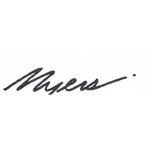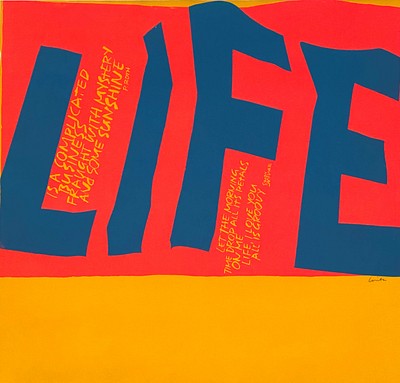James Long Scudder (Amer, 1836-1881) Oil Painting
Two ways to bid:
- Leave a max absentee bid and the platform will bid on your behalf up to your maximum bid during the live auction.
- Bid live during the auction and your bids will be submitted real-time to the auctioneer.
Bid Increments
| Price | Bid Increment |
|---|---|
| $0 | $10 |
| $100 | $25 |
| $500 | $50 |
| $1,000 | $100 |
| $2,500 | $250 |
| $5,000 | $500 |
| $10,000 | $1,000 |
| $15,000 | $2,500 |
| $50,000 | $5,000 |
| $100,000 | $10,000 |
About Auction
Apr 30, 2023
Fine Art Auction - 35th Anniversary Myers Antiques auctions@myersfineart.com
- Lot Description
James Long Scudder (American, 1836-1881) Painting. Title - Feeding the Chickens. Oil on canvas painting. Measures 17 inches high, 14 inches wide. Frame measures 22 inches high, 19 inches wide. Signed lower left J. L. Scudder 1886. Label on reverse Feeding the Chickens, Painted by J.L. Scudder, Huntington, L.I. (NY) 1866 in period script. On lower right of canvas, Painted by J. L. Scudder 1866. In good condition with light craquelar.
From Longislandsurnames.com: James Long Scudder (1836-1881), the earliest known and most prolific of Huntington's genre artists, was born April 17th,1836, the son of Thomas and Margaret (Long) Secudder. He was a direct descendant of Thomas Scudder who settled in Salem, Mass., in 1636, and whose three sons, Thomas, John and Henry came to Huntington about 1657. Since that time Scudder homes have been owned and occupied by members of this family in East Neck and along the east shore of Huntington Harbor. Thomas Scudder 6th, father of James, was born in one of the ancestral homes at East Neck, near the O'Donohue property. The house still stands, moved back from the road and changed beyond recognition. Its early appearance has been preserved in an unfinished painting by the artist, which is in the possession of the family of Timothy F. Scudder, who was a talented contemporary artist and well known in town for his excellent carriage painting. It was in this home that the two sons of Thomas 6th were born. James' younger brother, Thomas W., went to Kansas in 1850 and served in the Civil war with the rank of Major. The father was a sea captain on the packets which plied between Huntington and New York, but in later life he retired to the family farm where he expected James to succeed him in the pursuits of farming. However, James in early life showed great interest in the study of natural science and loved to roam the woods to observe animal life. He also displayed artistic talent and decided to make art his life's work. Though encouraged by his mother, his ambitions did not appeal to the practical minded father, for when informed of his son's desires he apprenticed him to Bostwick, the house painter. This arrangement did not last long as the youth developed the art of sign painting, illustrated by trade emblems, and found a ready market for his work in his native town. Thus encouraged, although he had little formal education in art, he persevered with his studies and learned the profession of taxidermy to perfect his technique of painting animals and game. When in 1876 his work was exhibited at the Academy of Art and Design in New York, he gained the reputation of being one of the outstanding game artists in the country, his painting Dead Game receiving most favorable comments. An impressive number of paintings were accomplished during his comparatively short life, most of which are still in the possession of the family. A small group is owned by the Huntington Historical Society. They include a scene in Huntington of 1860, Indian Summer, showing the present site of Heckscher Park from Shoemaker Lane (Mill street), and November Day on Long Island Sound (1877), showing a vessel in full sail against a background of gray skies. Jet, a large black dog owned by Miss Cornelia Prime, was a constant companion of the artist on his hunting trips. In his painting Coming to a Point, the gleam in Jet's eyes gives evidence of hidden game in the long marsh grass. The painting of Kate Darcy is most attractive to young children. She was a trotting mare, owned by George Gould and loved by the people of Huntington. Her death in January of 1881 came as a great shock to the community. Family portraits and paintings of noted people of the village are included in his work. A large painting of Dr. William Woodend (1877) is still identified by elder citizens as the old family doctor, who lived on Main street and took great interest in civic affairs. Constant references to Scudder's works have appeared in The Long Islander. One announcement in 1875 states that the artist was engaged in painting Steele's Garden on Lloyd's Neck, and that he had painted some excellent fruit pieces which could be seen at his home. Early in life, Scudder married Lydia E. Kelcey, daughter of Leander and Hannah (Rogers) Kelcey, who died in 1868 at the age of 27. They had two sons, Russell Crampton who died young, and Thomas Lessing. The artist died May 5th, 1881, after a long and painful illness. During the last year of his life, he painted a small study in still life 61/4 by 81/4 inches. He took for his subject items near at hand - the table at his bedside, on which a cigar box stood with a partly smoked cigar; also some raisins, an apple, a silver fruit knife and a peanut with part of the shell removed. Every detail is minutely executed and this is considered one of his finest pieces. Uncle Tommy, as his father was affectionately known, lived until April 9th, 1899, his 99th year. Thomas Lessing Scudder, who inherited his father's talent, cared for him until his death, then went to live in Santa Ana, California. Life in nineteenth century Huntington is well represented in these paintings of James Scudder. A seascape showing a vessel in full sail reminds one of the regular passenger and freight services between Huntington and New York. Kate Darcy brings to mind the heyday of the horse as the accepted mode of land travel; also that for many years horse training and racing constituted an important industry in this town. This painting also suggests the leisurely atmosphere of that day when, at the least provocation, a display of horsemanship and elegant equipment could take place on Main street. Uncluttered landscapes are reminiscent of the era when the huntsman and his dog were familiar sights on the streets, ready to take part in the forthcoming fox-hunt or a search for game-within town limit Tremendous changes have taken place since these pictures were painted almost a century ago, and a comparison with the present physical and economic aspect of the town is most interesting. Such a collection of pictures which constitutes a pictorial history of a town of the past. is important as genre art, and should be preserved for posterity. - Shipping Info
-
All shipping arrangements and costs are the sole responsibility of the buyer. We are happy to assist in the transfer of merchandise to a shipper of your choice. Buyers should request a shipping quote prior to bidding. There are reliable shipping companies to use, and they include:
(1) The UPS Store:
Charlie Mosher
301 West Platt St
Tampa, FL 33606
(813) 251-9593
store3751@theupsstore.com
www.theupsstore.com/3751For a shipping quote, click the link below to get started on a quote OR to make payment for an existing quote: MyAuctionQuote.com/myers
(2) The UPS Store:
RayAnna Brodzinski
740 4th Street North
St. Petersburg, FL 33701
(727) 513-2400
shipping@store6886.com
www.theupsstore.com/6886(3) The UPS Store:
Rian Fehrman
5447 Haines Rd N,
St. Petersburg, FL 33714
(727) 528-7777
store6173@theuspsstore.com
www.theupsstorelocal.com/6173(4) Family Pak & Ship
Amel & Mohamed Hamda
2822 54th Avenue S.
St. Petersburg, FL 33712
727 865-2320
Raman@familypakandship.com
www.familypakandship.com(5) The UPS Store:
Gina Farnsworth
204 37th Ave N.
St Petersburg, FL 33704
(727) 822-5823
store3146@theupsstore.com
www.theupsstore.com/3146(6) The UPS Store:
200 2nd Ave South
St Petersburg, FL 33701
(727) 826-6075
store3248@theupsstore.com
www.theupsstore.com/3248(7) Craters & Freighters
(813) 889-9008
Fax (813) 884-8393
Tampa@cratersandfrighters.com
www.cratersandfreighterstampa.com (U.S. & International)(8) Orbit Professional Packing Crating
(888) 247-8540 or (727) 507-7447
lg@orbitppc.com
www.orbitppc.com (U.S. & International)LARGER ITEMS SHIPPING SUGGESTIONS
For items too large for standard shipping, such as furniture:
(1) Plycon - Furniture Transportation Specialists"
(954) 978-2000 (U.S. only)
lisa@plycongroup.com
www.plyconvanlines.com
You must submit a request on-line.(2) All Directions Moving
Specialist in moving furniture from FL to NY.
941-758-3800
alldirections@comcast.net
(3) Craters & Freighters
(813) 889-9008 or (877) 448-7447
Tampa@cratersandfreighters.com
(U.S. & International).(4) Westbrook Moving LLC
Makes regular trips up and down the east coast.
(404) 877-2870
westbrookdeliveries@gmail.com(5) Eastern Express
Owner Jeff Bills makes regular trips up and down the east coast.
(843) 557-6633
jb101263@yahoo.com(6) Can Ship US
Owner makes trips from Florida to Canada
Steve Fleury (905) 301-4866
canshipus@gmail.comThere are many other local and national shippers available in our area that we can refer you to. We are not responsible for any delays on the part of this third party shipper, should there be any. We recommend shipping all items insured. Should any damage occur to items transported by a third party, we are not held responsible. In the event that an item is approved for a return, shipping is not refundable.
-
- Buyer's Premium



 EUR
EUR CAD
CAD AUD
AUD GBP
GBP MXN
MXN HKD
HKD CNY
CNY MYR
MYR SEK
SEK SGD
SGD CHF
CHF THB
THB


















